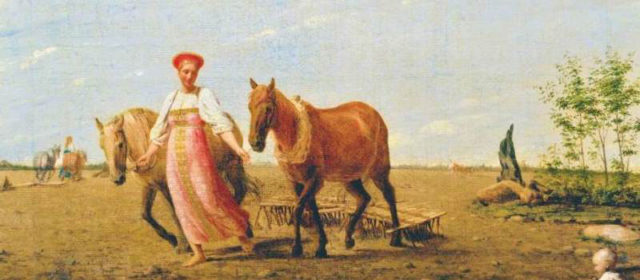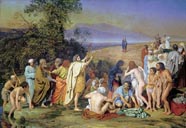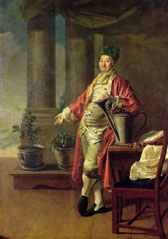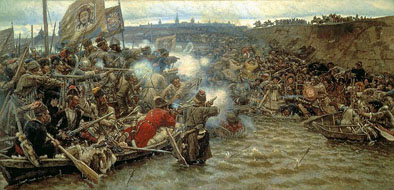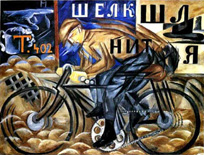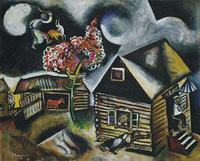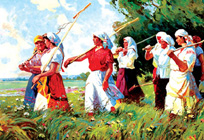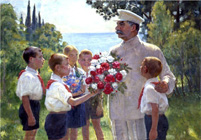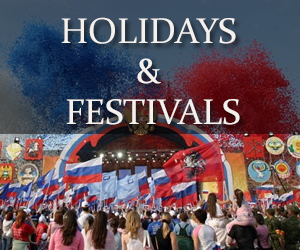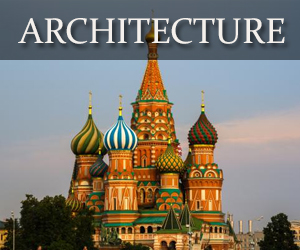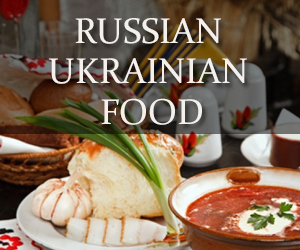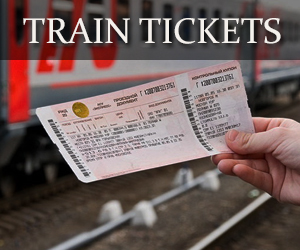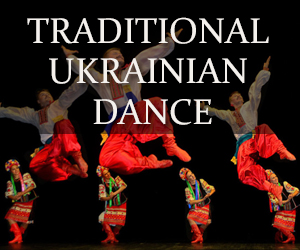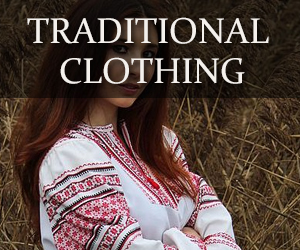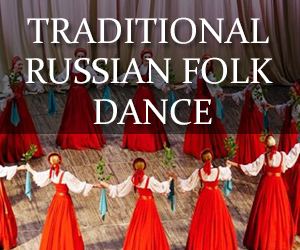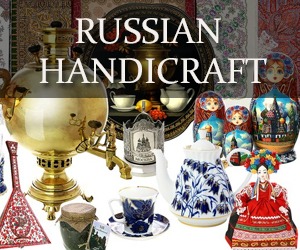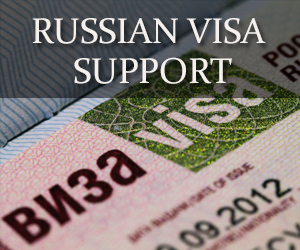Russian fine arts is synonymous with magnificent galleries and world renowned artists. From the icon paintings of 11th century Kievan Rus’ to the contemporary art of the 21st century, visitors are amazed to discover Russia’s rich and dynamic art history and culture.
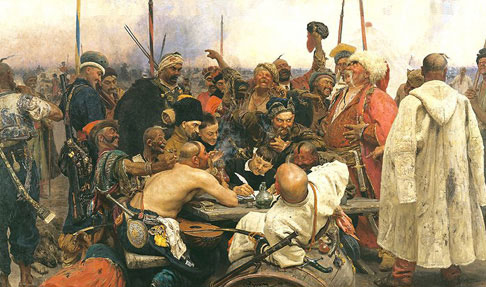 Zaporozhian Cossacks Writing a Letter to the Turkish Sultan (1880-1891)
Zaporozhian Cossacks Writing a Letter to the Turkish Sultan (1880-1891)
Artist: Ilya Repin Location: The Russian Museum, Saint Petersburg
Russian Art Forms / Genres / Movements
Icon Painting
An early form of Russian art, dating back over 1000 years, is icon painting. The Russian icon typically entails a sacred person or religious event, painted on a wood canvas.
![]() The tradition of icon painting was adopted in Kievan Rus’ following its conversion to Orthodox Christianity in 988 A.D. While early icons were painted to the strict models of Byzantine art, Russian masters including Andrei Rublev (1360s-1427), helped to develop a style unique to Eastern Europe.
The tradition of icon painting was adopted in Kievan Rus’ following its conversion to Orthodox Christianity in 988 A.D. While early icons were painted to the strict models of Byzantine art, Russian masters including Andrei Rublev (1360s-1427), helped to develop a style unique to Eastern Europe.
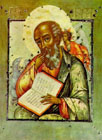 This traditional Russian style, a nonrealistic stylization, continued unabated until the later half of the 17th century. It was at this time that artists, led by Simon Ushakov (1626-1686), began to experiment with fresh new styles from Western Europe. This innovation in Russian icon painting coincided with a split in the Russian Orthodox Church, in which the State Church adopted comprehensive reforms, while traditionalists or “Old Believers” held steadfast to tradition, including the traditional style of icon painting.
This traditional Russian style, a nonrealistic stylization, continued unabated until the later half of the 17th century. It was at this time that artists, led by Simon Ushakov (1626-1686), began to experiment with fresh new styles from Western Europe. This innovation in Russian icon painting coincided with a split in the Russian Orthodox Church, in which the State Church adopted comprehensive reforms, while traditionalists or “Old Believers” held steadfast to tradition, including the traditional style of icon painting.
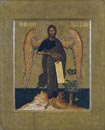 The most comprehensive collection of icon paintings can be found at the Tretyakov Gallery in Moscow. The collection includes priceless works dating from early Russian Christianity, all the way to the Stroganov School, the last major Russian icon movement which thrived in the late 16th and 17th centuries.
The most comprehensive collection of icon paintings can be found at the Tretyakov Gallery in Moscow. The collection includes priceless works dating from early Russian Christianity, all the way to the Stroganov School, the last major Russian icon movement which thrived in the late 16th and 17th centuries.
Classical Painting
The Protestant and Catholic influence on Russian icon painting inevitably brought about the movement of classical painting as well. While Classical Art of Renaissance was long established in parts of Western Europe, it wasn’t until 1757 when the Russian Academy of Arts was created in Saint Petersburg to instruct local artists on ancient and neoclassical styles.
A few early members of the esteemed academy include Dmitry Levitzky, Anton Losenko and Fyodor Rokotov, while notable classical painters of the early 19th century romantic era include Karl Briullov and Alexander Ivanov
Realist Painting
Some of Russia’s most notable artists and works of art come from the realist movement. A favorite style of the 19th century, Russian realist painters accurately illustrated portraits of their contemporaries, historical genre scenes (like the Repin painting above), as well as magnificent landscapes typical to the Russian Empire.
While some artists stuck to portraits and depictions of aristocracy, many others started to produce works of Russian peasantry and their suffering. This type of critical realism, which flourished in 19th century Russia under Alexander II, later became a model imitated by “Socialist Realist” artists of the Soviet Union.
Notable Russian realist painters include Ivan Kramskoi, Arkhip Kuindzhi, Isaac Levitan ,Vasily Polenov, Ilya Repin, Ivan Shishkin, Vasily Surikov and Viktor Vasnetsov.
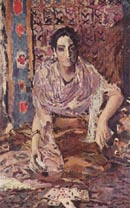 As in all forms of painting, there is a transitional period which incorporates styles from two or more different movements. Such was the case in the transition from realist painting to the modern art of avant-garde. Russian painters including Boris Kustodiev, Kuzma Petrov-Vodkin, Nicholas Roerich and Mikhail Vrubel developed their own unique styles that did not definitively fit into one movement or the other.
As in all forms of painting, there is a transitional period which incorporates styles from two or more different movements. Such was the case in the transition from realist painting to the modern art of avant-garde. Russian painters including Boris Kustodiev, Kuzma Petrov-Vodkin, Nicholas Roerich and Mikhail Vrubel developed their own unique styles that did not definitively fit into one movement or the other.
Russian Avant-Garde
Not so much a distinctive movement, Russian avant-garde describes a myriad of modern art forms including constructivism, futurism, neo-primitivism, rayonism, and suprematism amongst others.
- constructivism – refers specifically to a group of artists who sought to move beyond the autonomous art object, extending the formal language of abstract art into practical design work.
- futurism – a social and artistic philosophy established by Filippo Tommaso Marinetti in which artists glorified all that was modern, industrial and technologically advanced by striving to depict the “universal dynamism” they perceived around them.
- neo-primitivism – movement that took its name from Aleksander Shevchenko’s Neo-primitivizm (1913), which describes a crude style of painting based on the conventions of traditional Russian art forms such as the lubok, the icon, and peasant arts and crafts.
- rayonism – a short-lived, but important step in Russian abstract art, Rayonists sought an art that floated beyond abstraction, outside of time and space, by using dynamic rays of contrasting color, representing lines of reflected light.
- suprematism – an art movement focused on fundamental geometric forms (in particular the square and circle), in different colors, without any obvious sense.
Russian avant-garde thrived from the late 19th century all the way until the Stalin’s rise to power. By 1932, restrictions were imposed on what artists could paint, with a direction towards socialist realism as opposed to modern art.
Soviet Art
While theoretically, Soviet art would include everything post-revolutionary, the true era of Soviet art (unified associations of artists organized to serve state interest), never really started until 1932. With the establishment of the Moscow and Leningrad Union of Artists in August 1932, officially approved art was now required to follow the doctrine of Socialist Realism.
While strict socialist realism was the prominent style early on, many artists eventually incorporated new, innovate technique in the latter years of Soviet art. Despite this innovation, restrictions on what artists could paint were never really abandoned until the late 1980s.
Must See Art Galleries
Moscow Art Galleries
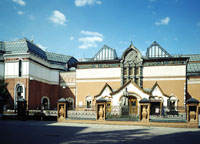 Tretyakov Gallery
Tretyakov Gallery
The State Tretyakov Gallery is the foremost showcase of Russian fine art. Its magnificent collection contains over 150,000 works of paintings, sculptures and graphics from Russian artists of the 11th to early 20th centuries.
address: 10, Lavrushinksy Pereulok, Moscow
metro: Tretyakovskaya
working hours: daily 10:30am – 7:30pm (closed Monday)
website: TretyakovGallery.ru
explore the museum: Google Art Project
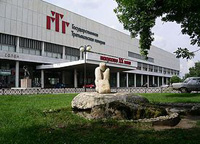 New Tretyakov Gallery of Modern Art
New Tretyakov Gallery of Modern Art
Residing at the Central House of Artists across from Gorky Park, the New Tretyakov is a showcase of Russian art starting from around the 1920s to present. Apart from the main gallery, the museum is also host to regular exhibitions and an adjacent, open air Sculpture Park.
address: 10, Krymsky Val, Moscow
metro: Park Kultury
working hours: daily 10:30am – 7:30pm (closed Monday)
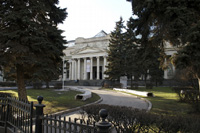 Pushkin Museum of Fine Arts
Pushkin Museum of Fine Arts
The second largest museum of foreign art in Russia (surpassed only by the Hermitage in St. Petersburg), the Pushkin Fine Arts Museum has an extensive collection of art & artifacts ranging from ancient antiquities to present.
address: 12, Ulitsa Volkhonka, Moscow
metro: Kropotkinskaya
working hours: daily 10:00am – 7:00pm (closed Monday)
website: Museum.ru
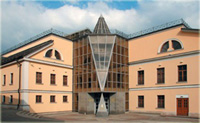 Museum of Private Collections
Museum of Private Collections
Part of the larger Pushkin Museum of Fine Arts (also conveniently located next door), the Museum of Private Collections houses a exhibit of Russian and foreign art from the 15th to 20th centuries.
address: 14, Ulitsa Volkhonka, Moscow
metro: Kropotkinskaya or Borovitskaya
working hours: daily 12pm – 7pm (closed Monday & Tuesday)
website: Museum.ru
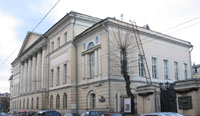 Moscow Museum of Modern Art
Moscow Museum of Modern Art
Opened in 1999 by president of the Russian Academy of Arts, Zurab Tsereteli, the Moscow Museum of Modern Art contains a splendid collection of Russian avant-garde art. In addition to renowned Russian artists, the museum contains modern and contemporary art from prominent American and European masters as well.
address: 25, Ulitsa Petrovka, Moscow
metro: Pushkinskaya
working hours: daily 12pm – 8pm (1pm – 9pm Thursdays)
website: MMOMA.ru
Saint Petersburg Art Galleries
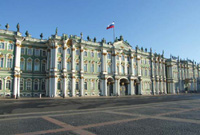 State Hermitage Museum
State Hermitage Museum
The largest museum of foreign art in Russia, and one of the largest in the world, The State Hermitage Museum is comprised of roughly 3 million paintings and artifacts. Founded by Catherine the Great in 1764, the main museum collection is currently housed in 6 historic buildings along the Palace Embankment. These include the Winter Palace, Small Hermitage, Old Hermitage and New Hermitage (all partially open to the public), as well as the Hermitage Theatre and Reserve House.
address: 2, Dvortsovaya Ploshchad (Dvortsovaya Square)
metro: Nevsky Prospekt or Gostiny Dvor
working hours: daily 10:30am – 6:00pm (closed Monday)
website: HermitageMuseum.org
explore the museum: Google Art Project
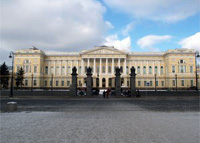 The Russian Museum
The Russian Museum
Like the Tretyakov Gallery in Moscow, the State Russian Museum is home to a vast collection of Russian art. Established in 1895 by Tsar Nicholas II, the museum has expanded significantly since its inception, particularly when private collections were nationalized following the 1917 Russian Revolution. Today it houses over 400,000 artifacts ranging from the 11th to 21st centuries.
address: 4, Ulitsa Inzhenernaya (Mikhailovsky Palace)
metro: Nevsky Prospekt or Gostiny Dvor
working hours: daily 10:00am – 5:00pm (closed Tuesday)
website: RusMuseum.ru
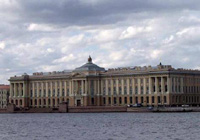 Academy of Fine Arts Museum
Academy of Fine Arts Museum
Founded in 1757, the Academy of Fine Arts Museum is the oldest art museum in Russia. It is this academy where some of Russia’s most renowned artists studied and lectured, and fittingly, it’s collection is predominantly made up of these students’ projects, works by teaching staff, as well as paintings related to the history of the Academy.
address: 17, Universitetskaya Naberezhnaya
metro: Vasileostrovskaya
working hours: daily 11am – 7pm (closed Monday & Tuesday)
website: RAH.ru
Kiev Art Galleries
 National Art Museum of Ukraine
National Art Museum of Ukraine
Founded in 1899, the National Art Museum of Ukraine is the most complete collection of native Ukrainian art in the world. The museum not only contains works of artists who were born in Ukraine, but from foreigners who worked in Ukraine and Ukrainian descendants who lived abroad.
address: 6, Vulytsya Grushevskovo, Kiev
metro: Maidan Nezalezhnosti or Kreschatyk
working hours: daily from 11am (closed Monday & Tuesday)
website: NAMU.kiev.ua
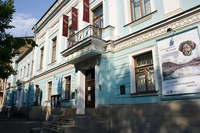 Kiev Museum of Russian Art
Kiev Museum of Russian Art
Founded in 1922, the origin of the Kiev Museum of Russian Art had its roots in the Soviet nationalization of private collections, including that of the Tereschenko family. Today it is one of the largest exhibits of Russian art (13th century to present) outside of Russia.
address: 9, Vulytsya Tereschenkovskaya, Kiev
metro: Ploscha Lva Tolstoho or Universytet
working hours: daily 10am-6pm (closed Monday & Thursday)
website: MuseumRu.kiev.ua
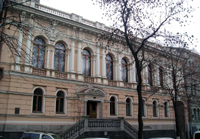 Kiev Museum of Western and Oriental Art
Kiev Museum of Western and Oriental Art
The museum, the largest collection of foreign art in Ukraine, was founded in 1919 on the basis of the private collection of industrialist (and patron of the arts), Bogdan Khanenko. Today the museum boasts over 17,000 paintings and artifacts from both Western and Oriental origins – from antiquity to present.
address: 17, Vulytsya Tereschenkovskaya, Kiev
metro: Ploscha Lva Tolstoho
working hours: 10:30am – 5:30pm (closed Monday & Tuesday)
website: KhanenkoMuseum.kiev.ua

